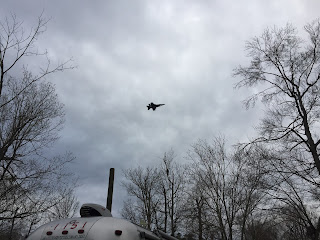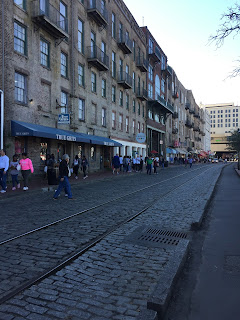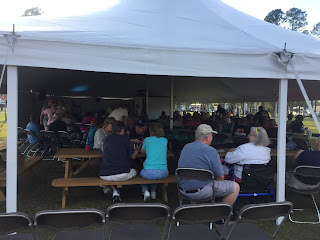In an unpretentious little state park, smack in the middle
of nowhere, with nothing to do, and nowhere close to go to.
It used to have a lake, before Hurricane Matthew took out
the dam last October. Now it just has a series of mudflats for birds and very
small fish. It wasn’t even worth taking the canoe off the truck for.
So we didn’t have to feel that we were missing the local
sights by vegetating on the couch or having extras naps in bed. It was a
sparsely occupied park, with about 90% vacancy rate, so we did not even have to
exert ourselves to be social.
We had spent a few days previously with friends, parked in
their yard and sharing meals with their family, healthy and happy. It was on
the day of our scheduled departure that a respiratory bug hit us, causing
coughing and tiredness.
On the days we felt mildly
energetic, we walked the nature trails. The paths are flat, not too strenuous,
and perfect for recuperating old fogies. The dogwoods were just coming into
bloom, their white flowers playing peek-a-boo in between the pines.
We couldn’t have found a better place to be.
When it was time to move on again, we at least felt up to
the drive, even if we weren’t 100% yet.
And
Virginia Beach, when we arrived mid-March, was pretty deserted. Not at all the bustling
party town we had been led to believe.
But it was not quiet.
Good thing we had done lots of sleeping in
Little Pee Dee. Afternoon naps were out of the question here.
They also have a huge memorial to General Douglas
MacArthur in that city, and we spent several hours there, too.
We even spent
some time at the Virginia Aquarium, which was close enough to the campground that we could walk there.
But who would go to Virginia Beach, and not go to the
beaches?
Not us.
We rode the bike trail all along the beach front, from the 1st
Street Jetty to the end of the pavement at 40th Street, sharing the
path with all sorts of contraptions known as bicycles.
They had singles,
doubles, quadripedals, and even one for 6 people, a “family ride”.
The statue of Neptune has pride of place along the beach,
but there are lots of little treasures tucked into unusual places: carvings of hermit
crabs in the flowerbeds, or a huge concrete snail near the boardwalk.
I’m just glad we were feeling well enough to enjoy them. Virginia Beach is definitely not a place for recuperation.
W





































